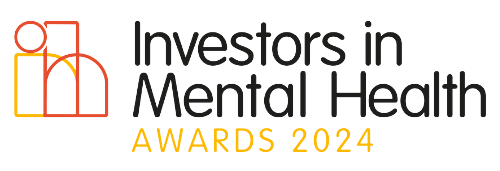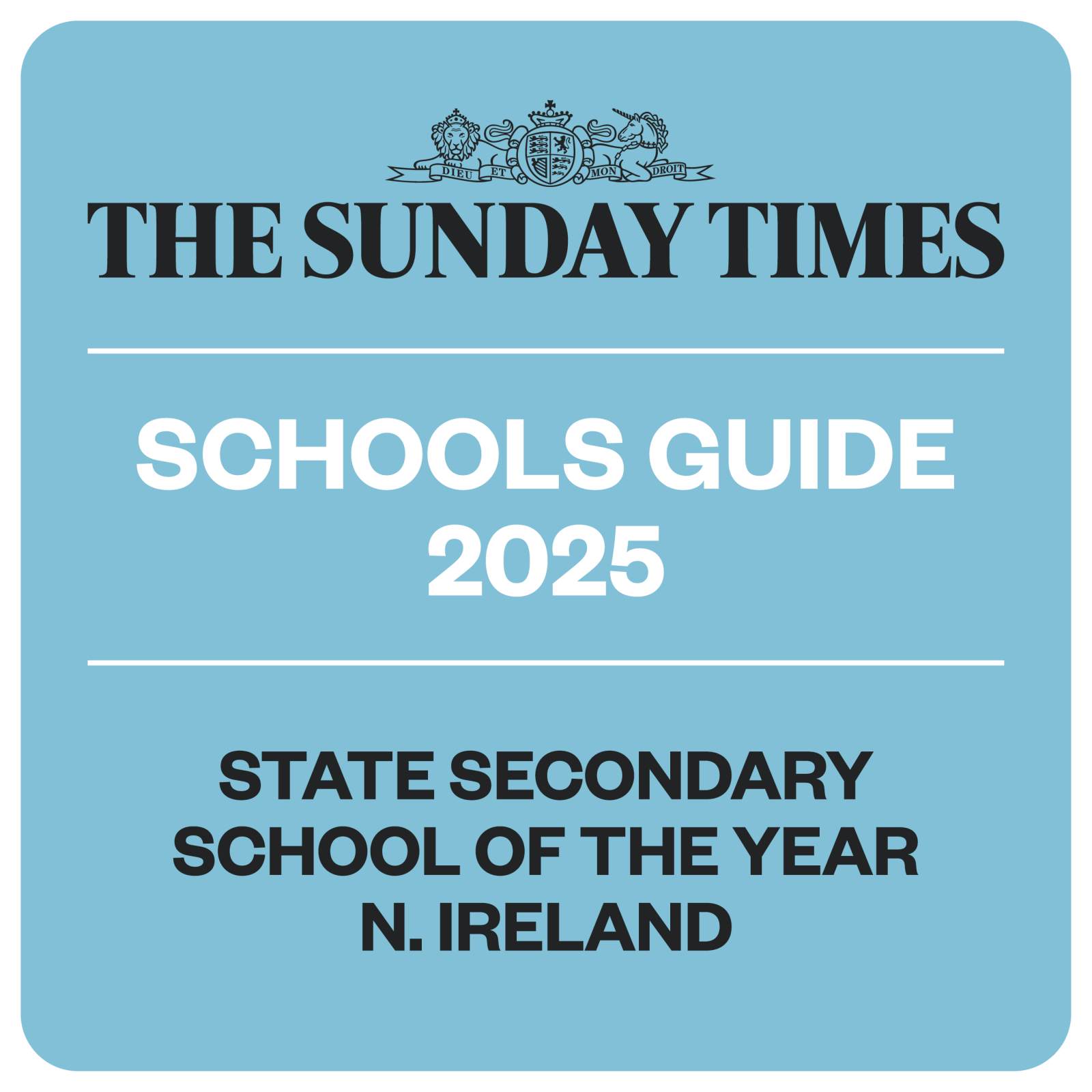Mathematics
SPECIFIC AIMS OF THE DEPARTMENT
EXAM BOARD
CCEA
OVERVIEW OF KEY STAGE 3 CURRICULUM
Aims and Key Features
Mathematics and Numeracy is a compulsory Area of Learning at Key Stage 3. It gives pupils a wider understanding of how the world around them works and prepares them for making decisions, solving problems and processing everyday information.
This Area of Learning encourages pupils to deepen the mathematical knowledge, understanding and skills they have acquired at Key Stages 1 and 2. Pupils develop and demonstrate this deeper understanding through creative and critical thinking, being flexible in their approach, solving problems and making informed decisions.
Mathematics helps pupils to develop important skills such as calculating, logical thinking and investigating. It enables pupils to:
• understand quantity and measures;
• appreciate patterns and relationships;
• explore size and shape; and
• analyse data and chance.
Pupils are given opportunities to develop their Cross-Curricular Skills of Communication, Using Mathematics and Using ICT, and their Thinking Skills and Personal Capabilities through Mathematics and Numeracy. The Thinking Skills and Personal Capabilities framework consists of five overlapping sets of skills:
• Managing Information;
• Thinking, Problem-Solving, Decision-Making;
• Being Creative;
• Working with Others;
• Self-Management.
Pupils are given opportunities to develop:
• knowledge and understanding of Number, Algebra, Shape, Space and Measures, Handling Data;
• the application of mathematical skills to real life and work situations;
• the creative use of technology to enhance mathematical understanding.
Course Structure
Some of the learning areas associated with the main strands of the KS3 course are given below for each curriculum year.
Year 8
Number – HCF and LCM, Directed Numbers, Fractions, Decimals
Algebra – Simplifying Expressions, Solving Equations, Substitution
Space, Shape and Measures – Angle Properties, Coordinates
Handling Data – Averages and Range, Bar Charts, Pie Charts
Year 9
Number – Indices, Estimation, Percentages
Algebra – Single Brackets, Sequences, Changing the Subject
Space, Shape and Measures – Polygons, Area, Compound Measures, Construction
Handling Data – Stem and Leaf Diagrams, Grouped Frequency Tables, Probability
Year 10
Number – Ratio and Proportion, Reverse Percentages
Algebra – Double Brackets, Quadratics, Trial and Improvement, Line Geometry
Space, Shape and Measures – Pythagoras, Trigonometry, Volume, Transformations
Handling Data – Scatter Graphs, Cumulative Frequency Curves, Box Plots
OVERVIEW OF KEY STAGE 4 CURRICULUM
https://ccea.org.uk/key-stage-4/gcse/subjects/gcse-mathematics-2017
The Key Stage 4 Mathematics curriculum is based on the CCEA GCSE Mathematics course which satisfies the Northern Ireland Subject Criteria and Requirements for Mathematics.
Aims and Key Features
This specification aims to encourage students to:
• develop fluent knowledge, skills and understanding of mathematical methods and concepts;
• acquire, select and apply mathematical techniques to solve problems;
• reason mathematically, make deductions and inferences and draw conclusions;
• comprehend, interpret and communicate mathematical information in a variety of forms appropriate to the information and context.
The following are important features of this specification.
• It provides a strong foundation for progression to GCSE Further Mathematics and for other disciplines where understanding and application of mathematics is essential.
• It gives students the appropriate mathematical skills, knowledge and understanding to help them progress to further academic and vocational study and to employment.
Course Structure
This specification comprises two units.
Unit 1 – 45% - external written examination with calculator. Pupils sit one of:
• M4 – 2hrs
• M3 – 2hrs
• M2 – 1hr 45mins
Unit 2 – 55% - two external written examinations: Paper 1 without calculator, and Paper 2 with calculator. Pupils sit one of:
• M8 – 2 x 1hr15mins
• M7 – 2 x 1hr15mins
• M6 – 2 x 1hr
The maximum UMS scores and maximum grades available for the common recommended pathways are outlined below.
• Higher Tier Option 1 – M4M8 – 400UMS – A*
• Higher Tier Option 2 – M4M7 – 355UMS – A
• Higher Tier Option 3 – M3M7 – 318UMS – B
• Foundation Tier – M2M6 – 291UMS – C*
Note that A* is a derived grade set independently in each examination series.
The units address the three assessment objectives for this specification:
• AO1: Use and apply standard techniques;
• AO2: Reason, interpret and communicate mathematically;
• AO3: Solve problems in mathematics and other contexts.
Subject Content
Some of the learning areas associated with the four strands of the course are given below for each unit.
Unit 1
Number - Percentages, HCF and LCM, Error and Bounds
Algebra - Quadratics, Algebraic Fractions, Straight Line Geometry
Geometry and Measures - Compound Measures, Mensuration, Trigonometry, Circle Theorems
Handling Data - Cumulative Frequency Curves, Box Plots, Sampling, Histograms
Unit 2
Number - Indices and Surds, Standard Form, Binary, Ratio and Proportion
Algebra - Simultaneous Equations, Proportion, Inequalities, Sequences, Graphs
Geometry and Measures - Sine and Cosine Rules, Similarity, Transformations, Bearings, Polygons, Construction
Handling Data - Counting, Probability
OVERVIEW OF KEY STAGE 5 CURRICULUM
https://ccea.org.uk/post-16/gce/subjects/gce-mathematics-2018
The Key Stage 5 Mathematics curriculum is based on the CCEA GCE Advanced Subsidiary (AS) and Advanced (A level) GCE courses in Mathematics.
Aims
This specification aims to encourage students to:
• understand mathematics and mathematical processes in a way that promotes confidence, fosters enjoyment and provides a strong foundation for progress to further study;
• extend their range of mathematical skills and techniques;
• understand coherence and progression in mathematics and how different areas of mathematics are connected;
• apply mathematics in other fields of study and be aware of the relevance of mathematics to the world of work and to situations in society in general;
• use their mathematical knowledge to make logical and reasoned decisions in solving problems both within pure mathematics and in a variety of contexts, and communicate the mathematical rationale for these decisions clearly;
• reason logically and recognise incorrect reasoning;
• generalise mathematically;
• construct mathematical proofs;
• use their mathematical skills and techniques to solve challenging problems that require them to decide on the solution strategy;
• recognise when they can use mathematics to analyse and solve a problem in context;
• represent situations mathematically and understand the relationship between problems in context and mathematical models that they may apply to solve these;
• draw diagrams and sketch graphs to help explore mathematical situations and interpret solutions;
• make deductions and inferences and draw conclusions by using mathematical reasoning;
• interpret solutions and communicate their interpretation effectively in the context of the problem;
• read and comprehend mathematical arguments, including justifications of methods and formulae, and communicate their understanding;
• read and comprehend articles concerning applications of mathematics and communicate their understanding;
• use technology such as calculators and computers effectively, and recognise when such use may be inappropriate;
• take increasing responsibility for their own learning and the evaluation of their own mathematical development.
Course Structure
The course has been divided into four units: two units at AS and two units at A2. All units are assessed through external written examinations.
AS 1: Pure Mathematics - 1hr 45mins - 60% of AS (24% of A level)
AS 2: Applied Mathematics - 1hr 15mins - 40% of AS (16% of A level)
A2 1: Pure Mathematics - 2hrs 30mins - 36% of A level
A2 2: Applied Mathematics – 1hr 30mins - 24% of A level
Content
This section sets out the content and some of the learning outcomes for each unit.
Year 13
Unit AS 1 Pure Mathematics
Algebra and Functions - Indices and Surds, Quadratics, Simultaneous Equations, Inequalities, Factor and Remainder Theorems, Graphs and Transformations
Coordinate Geometry - Straight Line Geometry, Circle Geometry
Sequences and Series - Binomial Expansion
Trigonometry - Sine and Cosine Rules, Trigonometric Equations, Trigonometric Proofs
Exponentials and Logarithms - Laws of Logarithms, Exponential Growth and Decay, Index Equations and Inequalities
Differentiation - Increasing and Decreasing Functions, Problems involving Gradients, Tangents, Normals, Stationary Points
Integration - Definite and Indefinite Integration, Area between Curve and Axis
Vectors - Vectors in 2D, Magnitude and Direction, Geometrical Interpretation
Unit AS 2 Applied Mathematics Section A: Mechanics
Kinematics - Displacement-Time and Velocity-Time Graphs, Constant Acceleration Formulae in One and Two Dimensions
Forces and Newton’s Laws - Motion under Gravity, Equilibrium, Dynamics, Connected Particles
Unit AS 2 Applied Mathematics Section B: Statistics
Sampling - Simple Random and Stratified Sampling
Data Interpretation - Histograms, Central Tendency and Variation, Bivariate Analysis, Product Moment Correlation Coefficient, Cleaning Data
Probability - Addition and Multiplication Laws, Tree Diagrams, Venn Diagrams
Statistical Distributions - Binomial Distribution
Year 14
Unit A2 1 Pure Mathematics
Algebra and Functions - Partial Fractions, Functions, Modulus, Transformations
Coordinate Geometry - Parametric Equations
Sequences and Series - Arithmetic, Geometric, Recurrence Relations, Binomial Expansion
Trigonometry - Radian Measure, Compound and Double Angle Formulae, Harmonic Form, Trigonometric Equations and Proofs
Differentiation - Product, Quotient, Chain Rules, Implicit and Parametric Differentiation
Integration - Integration by Substitution and Parts, Integration using Partial Fractions, Separation of Variables, Volume of Revolution
Numerical Methods - Newton-Raphson, Trapezium Rule
Unit A2 2 Applied Mathematics Section A: Mechanics
Kinematics - Calculus in One and Two Dimension, Projectile Motion
Moments - Static Problems involving Rods, Ladders, Hinged Beams
Impulse and Momentum - Direct Collisions and Explosions
Unit A2 2 Applied Mathematics Section B: Statistics
Probability - Conditional Probability
Statistical Distributions - Normal Distribution
Hypothesis Testing - Proportion in Binomial Distribution, Mean of Normal Distribution, Correlation Coefficient
The A2 assessment units include some synoptic assessment, which encourages candidates to develop their understanding of the subject as a whole.
The A2 assessment units provide opportunities to demonstrate higher order thinking skills by incorporating:
• more demanding unstructured questions;
• questions that require candidates to make more connections between sections of the specification.












